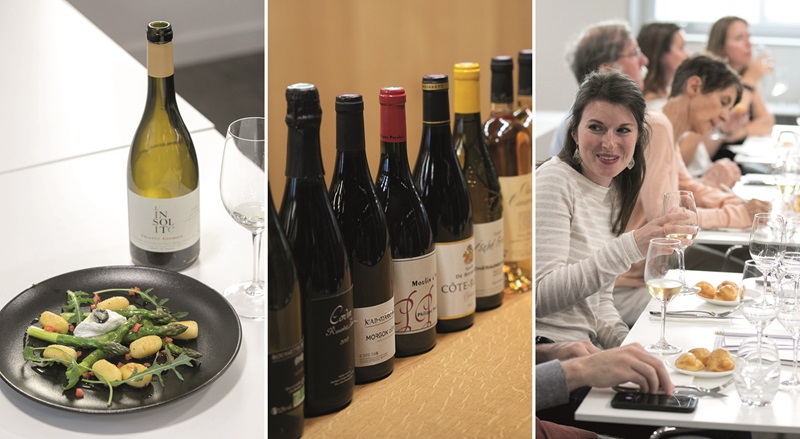-
Locations
Campuses in Europe & Middle EastCampuses in The AmericasCampuses in AsiaLe Cordon Bleu International
- Online Learning
Contact your local representative - Our Story
- Programmes
- Brochures
- News & Events
- Contact
- Find Course

Food and wine pairing is a real skill that takes your meals to the next level. By pairing the right wine with the right dish, you get the best out of every ingredient. Far from being an exact science, food and wine pairing is a creative exploration based on fundamental principles which leaves room for your own taste and intuition. Le Cordon Bleu Paris invites you to discover its various programmes which highlight this expertise.
More than just an accompaniment, wine is an integral part of a meal and an integral part of the culinary experience. A successful food and wine pairing brings out the flavours of the dish, enhancing its aromas and balancing its textures. It sets the pace of the menu by adding freshness, roundness or strength, depending on the dishes served.
Characterised by their bubbles of differing sizes, sparkling wines fall into two main categories: Wines made using the traditional method and wines made using the ancestral method.
Wines made using the traditional method, such as Champagne, undergo a second fermentation in the bottle. This gives them greater aromatic complexity and more finesse in terms of texture.
Sweet and syrupy wines are rich in appearance and sweet in taste.
This is due to the over-ripening of the grapes.
They are generally drunk at the end of a meal, with desserts or cheeses.
Wine should enhance the flavours of the dish without masking them, and vice versa.
The food and wine pairing must therefore create a balance between the textures of the dish and those of the wine. A bold dish, for example, will go well with a lively wine, whereas a creamy dish should be accompanied by a rounder wine.
You can also play on the similarity of flavours between the food and the wine.
Conversely, you can use contrasts to create a sensation of surprise and freshness. For example, a spicy dish goes well with a slightly sweet wine that will soften the spices. A fish dish can be paired with white wine to add a touch of freshness.
The classic pairing par excellence is red wine with red meat. Choose a full-bodied red wine to accompany grilled red meat, and a lighter, fruitier red wine for red meat in a sauce.
With white fish or roast poultry, it's best to opt for a dry white wine.
Grilled poultry is best served with a fresh rosé.
Cheeses are just as important when it comes to pairing with wine. In general, white wines are the best option.
Dry, mineral wines are ideal for soft cheeses, while sweet wines go perfectly with blue-veined cheeses.
Certain light, fruity red wines go well with hard cheeses.
For a romantic dinner, opt for elegant, refined wines. Choose pink Champagne as an aperitif, dry white wine to accompany a fish or shellfish dish, and a light Pinot Noir for white meat. Finish by sharing a glass of sweet wine with your other half.
For aperitifs, it's best to opt for light, refreshing wines. Choose a sparkling Prosecco, a dry, fruity white wine or a rosé from Provence to accompany your appetisers.
The Wine & Management Diploma is a comprehensive 10-month programme that will give you a solid grounding in the world of wine. From viticulture and tasting to marketing and cellar management, this programme leads to a double degree in collaboration with URCA (Université de Reims Champagne-Ardenne). You will also learn how to pair food and wine with teachers who share your passion!
This two-week intensive programme completely immerses participants in the world of wines and spirits. From learning how to taste, to food and wine pairings and studying the main French wine growing regions, this programme will give you a better understanding of the differences between, and characteristics of, our wine growing terroirs.
Le Cordon Bleu Paris – Hôtel de la Marine also provides a range of wine workshops led by professional sommeliers. These workshops will introduce you to leading grape varieties and emblematic appellations and introduce you to the art of food and wine pairing. Several 2-hour courses are available from €70. There are workshops on Burgundy wines, Bordeaux wines, Rhône and Loire wines, and other wines grouped together under the name Grands Terroirs.
Copyright © 2026 Le Cordon Bleu International B.V. All Rights Reserved.